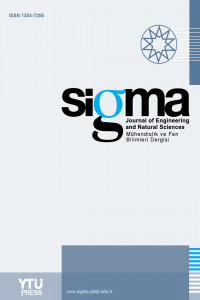Effects of double channel shielding gas supply in MIG/MAG welding on process parameters and spatter formation
Abstract
In gas metal arc welding (GMAW), the effect of welding wire and shielding gas type on weld metal composition and mechanical properties is significant. Today, in GMAW, argon and CO2 shielding gases are mixed in some ratios in order to improve technological features, stabilize the arc and reduce spatter. Besides research in conventional gas metal arc welding, some researchers studied modified GMAW process, called DMAG, in which shielding gases were fed alternatively and they reported differences in technological aspects compared to conventional GMAW. In the present study, not only have process parameters been recorded but also spatter formation has been studied both for conventional GMAW and DMAG processes, which use Ar-CO2 shielding gases that consist of %40, %50 and %60Ar (vol). Welding with both solid and metal cored wires and for identical shielding gas rates, average current intensity values are higher and average arc voltage values are lower with DMAG when compared to conventional GMAW. Although total heat input was higher with conventional GMAW with solid wire when compared to DMAG, it was lower with the use of metal cored wire. As the literature supported, compared to conventional GMAW, DMAG welding with both solid and metal cored wires created finer and less spatter.
References
- The article references can be accessed from the .pdf file.
Details
| Primary Language | English |
|---|---|
| Subjects | Industrial Biotechnology |
| Journal Section | Research Articles |
| Authors | |
| Publication Date | September 1, 2013 |
| Submission Date | January 3, 2013 |
| Published in Issue | Year 2013 Volume: 31 Issue: 3 |
IMPORTANT NOTE: JOURNAL SUBMISSION LINK https://eds.yildiz.edu.tr/sigma/


